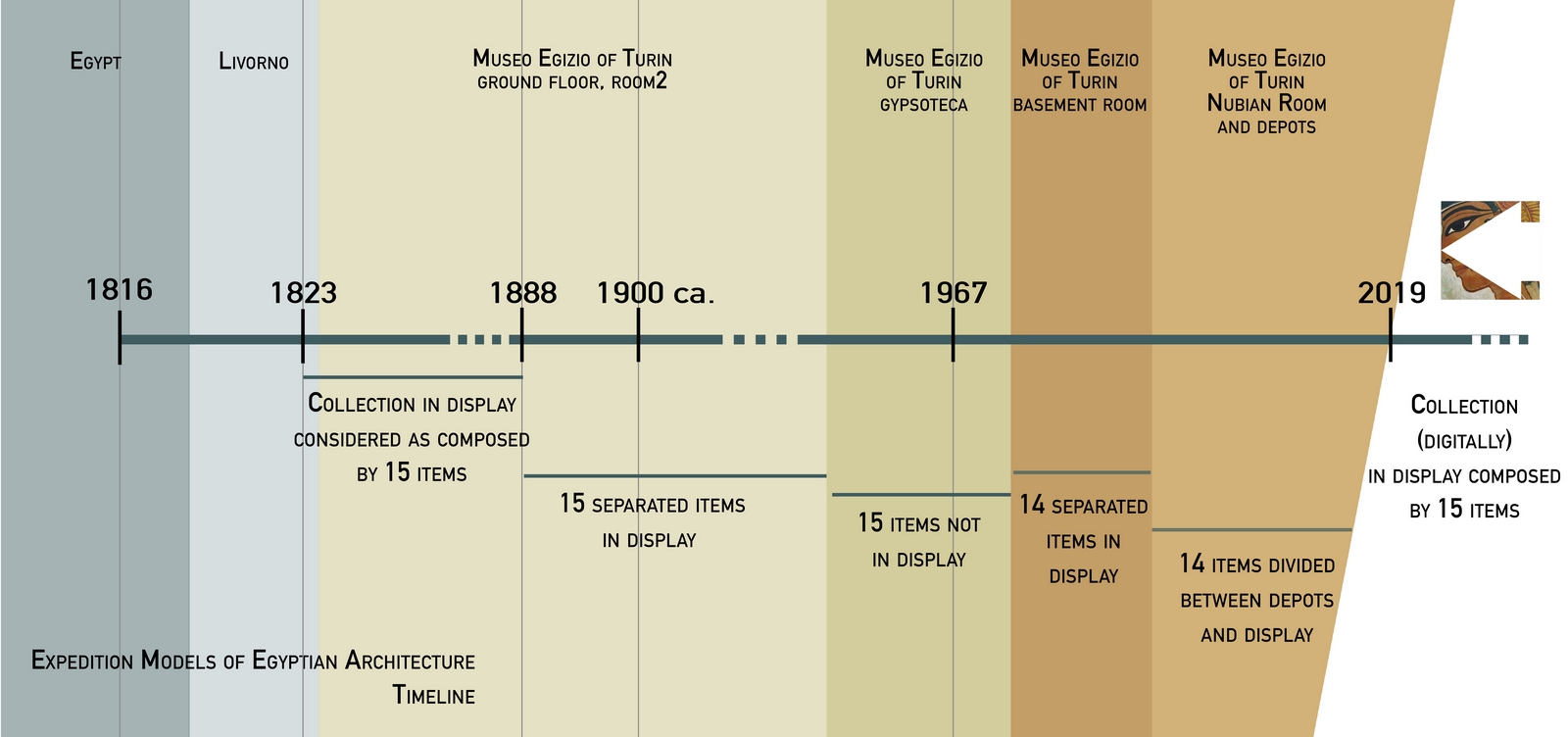



The collection of maquettes is conserved at Museo Egizio di Torino. A part of it is accessible in the museum exhibit; another part is kept in the museum depots. The collection includes 15 objects: temples, portals, propylaea and an obelisk. The models of the temple of Beit el-Wali, Tafa South and a part of the temple of Dakka are exhibited in the Temple of Ellesiya/Nubian Room. The models of the smaller Abu Simbel temple, Abu Oda, a part of Dakka with its propilea, Debod with its portals, El-Hilla, Gherf Hussein, Tafa North and the obelisk of Heliopolis are stored in different parts of the museum depots. The model of the temple of Maharraqa is not accessile so far. Its presence has been registered as part of the collection from its arrive in Italy until 1967, at the Pirelli Exhibition in Milan.

The historical investigation has been carried on through digital archives and through documentation conserved at the following archives: ASTo, Archivio di Stato di Torino, Sezione Corte, Archivio dell’Accademia delle Scienze, Torino, Soprintendenza per i Beni Archeologici del Piemonte e del Museo Antichità Egizie, Torino, Bibliothèque de Genève-Papiers Jean-Jacques Rifaud.